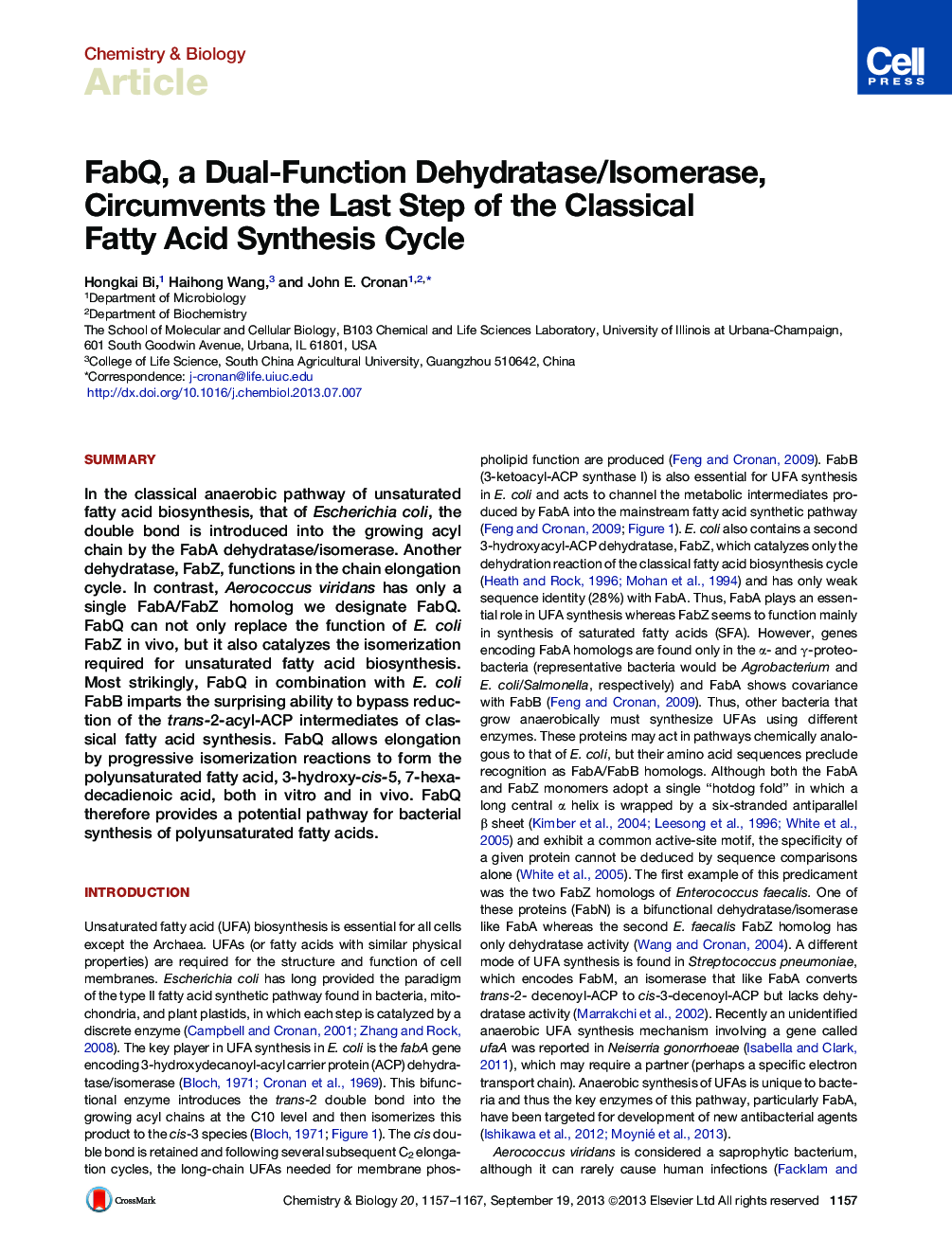| Article ID | Journal | Published Year | Pages | File Type |
|---|---|---|---|---|
| 1391754 | Chemistry & Biology | 2013 | 11 Pages |
•FabQ can perform the reactions catalyzed by two enzymes in most bacteria•FabQ can bypass the enoyl-ACP reductase step by isomerization in place of reduction•In vitro FabQ-catalyzed isomerization can generate polyunsaturated fatty acids
SummaryIn the classical anaerobic pathway of unsaturated fatty acid biosynthesis, that of Escherichia coli, the double bond is introduced into the growing acyl chain by the FabA dehydratase/isomerase. Another dehydratase, FabZ, functions in the chain elongation cycle. In contrast, Aerococcus viridans has only a single FabA/FabZ homolog we designate FabQ. FabQ can not only replace the function of E. coli FabZ in vivo, but it also catalyzes the isomerization required for unsaturated fatty acid biosynthesis. Most strikingly, FabQ in combination with E. coli FabB imparts the surprising ability to bypass reduction of the trans-2-acyl-ACP intermediates of classical fatty acid synthesis. FabQ allows elongation by progressive isomerization reactions to form the polyunsaturated fatty acid, 3-hydroxy-cis-5, 7-hexadecadienoic acid, both in vitro and in vivo. FabQ therefore provides a potential pathway for bacterial synthesis of polyunsaturated fatty acids.
Graphical AbstractFigure optionsDownload full-size imageDownload high-quality image (130 K)Download as PowerPoint slide
